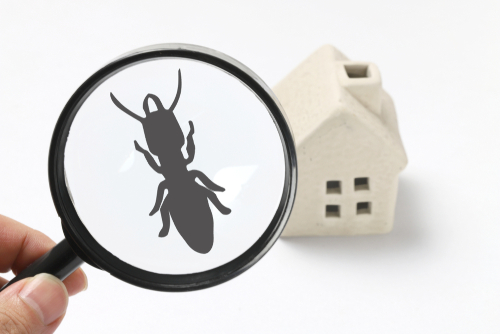Miami has overtaken Los Angeles for the No. 1 spot on Orkin’s annual Top 50 Termite Cities List. Tampa and Washington, D.C., rank third and fourth, respectively, with Raleigh rounding out the Top 5 this year. Orkin also provided tips to help prevent termites from destroying your property.

The new Top 50 list is based on data from the U.S. metro areas where Orkin performed the most termite treatments from Feb. 1, 2022, to Jan. 31, 2023. The ranking includes both residential and commercial treatments:
- Miami (+1)
- Los Angeles (-1)
- Tampa
- Washington, D.C. (+1)
- Raleigh (+1)
- Atlanta (-2)
- Norfolk (+2)
- San Francisco (+2)
- New York (+3)
- Orlando (-3)
- San Diego
- Richmond (+1)
- Chicago (+10)
- New Orleans (+3)
- West Palm Beach (-7)
- Philadelphia (+2)
- Baltimore (+4)
- Charlotte (-2)
- Dallas (-5)
- Greenville, SC
- Nashville (-6)
- Phoenix (-3)
- Houston (-1)
- Indianapolis (+1)
- Detroit (+6)
- Charleston, SC (+15)
- Myrtle Beach (+7)
- Charleston-Huntington, WV (+7)
- Cincinnati
- Knoxville (-4)
- St. Louis (+6)
- Pittsburgh
- Augusta (+3)
- Columbia, SC (-6)
- Memphis (+12)
- Greensboro (+6)
- Kansas City (-7)
- Jacksonville (+2)
- Champaign, IL (+15)
- Savannah (-13)
- San Antonio (+2)
- Baton Rouge (+10)
- Mobile, AL (+6)
- Greenville, NC (+4)
- South Bend (+35)
- Tulsa (-7)
- Austin (-3)
- Paducah, KY (+7)
- Ft. Myers (-16)
- Chattanooga (-4)
‘Silent Destroyers’
According to Orkin, termites are often called the “silent destroyers” because they may be secretly hiding and thriving in your property. All termites consume cellulose-based plant materials that, unfortunately, every property can provide regardless of their construction type. These pests cost Americans more than $5 billion in damage each year, and most insurance plans don’t cover the damage from termites.
“Termites feed primarily on wood and can compromise the strength and safety of an infested structure,” said Glen Ramsey, Orkin’s director of technical services. “[I]t’s critical to detect and treat them as early as possible. Anyone who suspects a termite infestation should contact a pest management professional immediately.”
According to Orkin, there are over 2,000 different species of termites with over 40 species in the United States alone. Although they have distinct characteristics, most look similar. They typically measure between 1/4 and 1/2 of an inch long and have soft bodies with straight antennae. Colors range from white to light brown, with worker termites often appearing lighter and swarming termites darker.
Warning Signs
Because of the structural threats that termites pose, it’s important to know how to identify signs of termites in order to take a proactive approach in eliminating them from your property. A few common signs of a termite infestation include:
- A temporary swarm of winged insects in your property or from the soil around your property
- Any cracked or bubbling paint or frass (termite droppings)
- Wood that sounds hollow when tapped
- Mud tubes on exterior walls, wooden beams, or in crawl spaces
- Discarded wings from swarmers
Property owners can get termites from:
- Wooden structures, such as porches and decks, in direct contact with the ground
- Stacks of firewood that lean against a property
- Damp soil near foundations from leaking faucets, gutters, or downspouts
- Trees and shrubs near the property
- Above-ground locations in the property that remain damp enough to support termites without them needing to return to the moist conditions found in the soil
Prevention
Orkin recommends the following proactive tips to help prevent termites:
- Check water drainage sites to ensure they remain cleared and effective.
- Monitor the collection of moisture by fixing pipes, gutters, downspouts, A/C units, and other fixtures susceptible to leaking.
- Caulk around utility lines or pipes.
- Get rid of rotting wood and debris near the property.
- Place screens on outside vents.
- Check wooden structures for damage.
